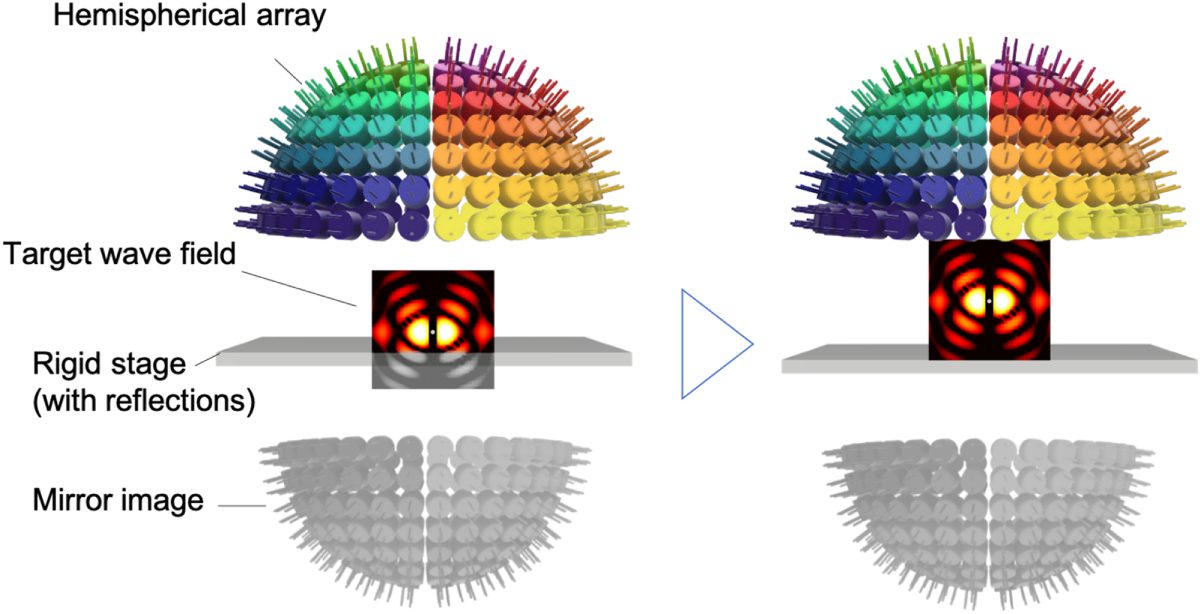Scientists from Japan have presented to Japanese Journal of Applied Physics a new method for manipulating objects at a distance. This is a “sound trap” – objects can be moved using sound waves.
Researchers at the University of Tokyo Metropolitan University have unveiled a new technology that allows small objects to be moved contactlessly using sound waves. They used a hemispherical array of ultrasonic transducers to create three-dimensional acoustic fields that held and lifted a small polystyrene ball from the surface. Although they used a method similar to a laser trap, it can be adapted to a wider range of particles and materials.
Biologists and chemists have been using light to move microscopic objects for several years. In fact, part of the Nobel Prize awarded to Arthur Eshkin was for excellence in the development of optical tweezers. This is a device with which you can move objects using laser light.
Therefore, the researchers presented acoustic trap – an alternative technology that uses sound instead of optical waves. They can be applied to a wider range of objects and materials – researchers have already recorded the manipulation of millimeter-sized particles. However, scientists point out that they need to overcome technical challenges. In particular, scientists find it difficult to control huge arrays of ultrasonic transducers in real time and obtain sound fields to move objects located far from the transducers themselves, especially near surfaces that reflect sound.
Now scientists at Tokyo Metropolitan University have developed a new approach to moving millimeter-sized objects from a reflective surface using a hemispherical array of sensors. Their method of manipulating the array does not involve complex addressing of individual elements. Instead, they split the array into manageable blocks and use an inverse filter that finds the optimal phase and amplitude to drive them to create a single trap away from the transducers themselves.
Source; Japanese Journal of Applied Physics, Volume 60, Number SD Citation Shota Kondo and Kan Okubo 2021 Jpn. J. Appl. Phys. 60 SDDD16












